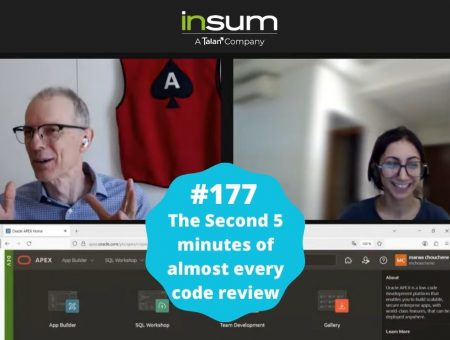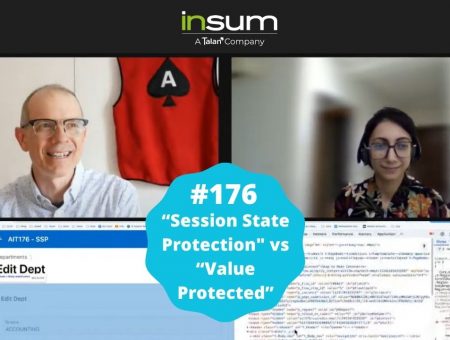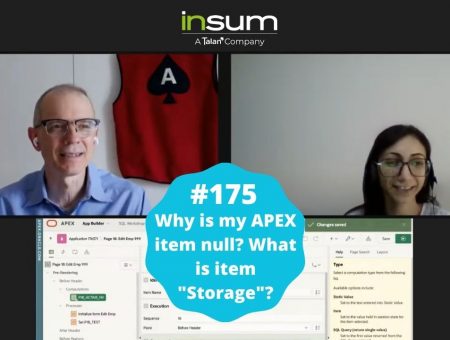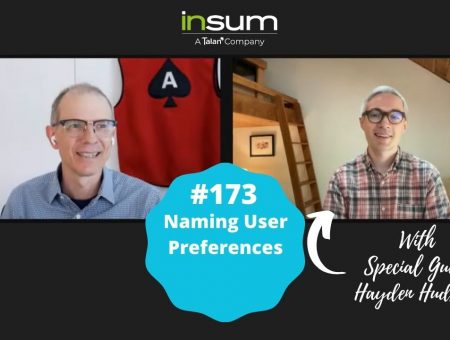Yes, you can have session state protection enabled and send deep links via email. Anton and Hayden demonstrate in this slightly extended episode.
And, as usual, if you have comments, questions, or suggestions about this episode? Why not post them directly to Oracle? Here is this episode’s link
View Past Episodes
Full episode list on YouTube here.
Past Episodes
APEX Instant Tips #177: The second 5 minutes of almost every code review
For this episode, log into your APEX development workspace and follow along with this code review....
Read moreAPEX Instant Tips #176: “Session State Protection” vs “Value Protected”
2 settings, Session State Protection and Value Protected, and 3 places they can apply. Anton and...
Read moreAPEX Instant Tips #175: Why is my APEX item null? What is item “Storage”?
Be aware of the order of operations in APEX. Keep this in mind: Processes happen before...
Read moreAPEX Instant Tips #174: Dynamic Actions and Order of Execution
Dynamic actions have brought client-side JavaScript to everyone, but it is still important to understand a...
Read moreAPEX Instant Tips #173: Naming User Preferences
Anton teams up with very special guest Hayden Hudson to add a follow up on epsisode...
Read moreAPEX Instant Tips #172: Region Template Best Practices
Standard? Blank with Attributes? Blank with Attributes (No Grid)? When should I use each of these...
Read moreAPEX Instant Tips #171: APEX v24.2 Opening Modal Dialog Pages
When upgrading to APEX v24.2 be sure to fix custom javascript that opens modal dialog pages...our...
Read more








Nice informations .
May be you have a hint for me about “strange” behaviour whe I use deep linking in an socialSignIn driven APEX APP. If a spezific page is secured/authorized – deep link doesn’t work if not it work like a charm. The APEX Version is 24.1?
Hi Thorsten,
Deep linking can be very challenging. If a page requires authentication (authN) it will redirect to login. If you have enabled deep linking in your application it should work even with social sign-on. If the page has an authorization (authZ) scheme, you will only get access to the page if you pass the authZ requirements. The extra challenge is related to passing parameters to the page. If the page or any of the parameters require a checksum (session state protection is enabled), you must include the checksum in the original request (before you are redirected to social sign-on). This means that the SSP settings must allow the checksum to be at the application or user level (not the session level). If it is at the user level, then the user that logs in must be the same as the user that the checksum was generated for. This can all be very difficult to accomplish and can take a significant amount of trial and error the first few times you try to get it working.
I hope this helps. If you provide more detail I may be able to give more specific advice.
Best of luck,
Anton